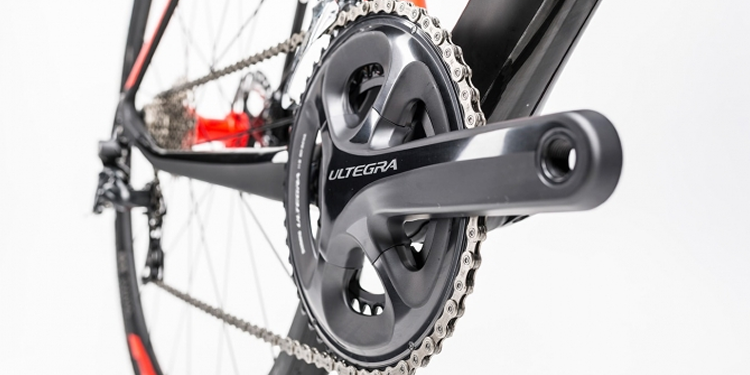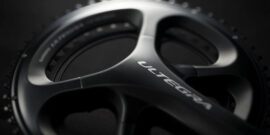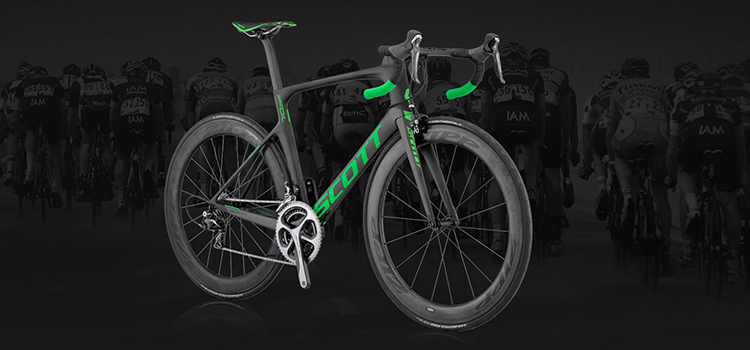A bike’s drivetrain comprises the cranks, front chainrings, rear cassette and the chain, as well as the shifters and derailleurs – also known as mechs. Together they’re a hugely important part of your bike. Groupsets are essentially the same thing, but often also include brakes.
Though simple in theory, some of today’s bicycle drivetrains are fantastically advanced. The majority are cable-activated, but at the top end you find electronic systems such as Shimano’s Di2 or SRAM’s eTap.
Whether you’re looking at the spec of components on a new bike you’re eyeing up, or ready to upgrade either individual components or the whole groupset, it’s important to understand the main terminology, how it works and how it all fits together.
HOW MANY GEARS DO I NEED?
While total number of gears is important, what’s more important is that the range of ratios is right for you and your riding. Ideally, your smallest (shortest) gear should winch you up the steepest hill, the biggest (tallest) should allow you to power back down (quickly enough!); yet the steps between should not be too jarring. You may well achieve that with 11 or 12 gears on a mountain bike, or 20 on a road bike, despite the potential for running up to 33.
The range can be adjusted by fitting bigger or smaller chainrings on the cranks. A smaller ring with fewer teeth lowers the gearing, and vice versa. Getting the gearing right on your next new bike is important, but it’s a relatively cheap and easy modification if you want to change later.
You can also change rear gearing – either by fitting a different cassette, or by replacing one ratio with a large 40/42-tooth ‘expander ring’ – but that can be more fiddly. All rear mechs have a maximum gear they can physically accommodate, and a bigger gear may require a new, longer mech.
WHICH IS THE BEST DRIVETRAIN?
Like any mods, gearing tweaks need a healthy base to be effective. So what are your options? The answer, in a market dominated by the Japanese giant Shimano and its US adversary SRAM, is almost infinite! Both companies group components into ranges with increasingly high specs, and as parts can be mixed and matched across ranges, it helps to understand what each one represents.
Shimano’s serious mountain bike componentry starts with Deore, rising through SLX to the luxury XT and pro-level XTR. They also have a downhill-biased group Zee, and a pro-level version, Saint.
SRAM’s equivalents are X5, X7/X9, then X0 and XX. They also have a dedicated 11-speed range, which starts at NX and gets lighter and sharper through GX, X1, X01 and finally XX1. At the top of this range is the new Eagle 12-speed tech.
Road bike drivetrain hierarchy is a little less complicated! Shimano’s serious offerings start at Claris, rising through Sora, Tiagra and 105 to the impressive Ultegra and pro-level Dura-Ace. Those top two tiers are where you find electronic Di2 shifting.
SRAM’s rough equivalents start with the Tiagra-level Apex, before moving up to Rival, Force and the pro-level Red. Red eTap is SRAM’s electronic shifting, and unlike Di2, it’s wireless.
DO I NEED A FRONT MECH?
While single front-ring (or 1x, pronounced ‘one-by’) drivetrains are appearing on the road, they have the biggest benefits on mountain bikes. Removing the front mech, shifter and cable drops significant weight, increases ground clearance, frees up bar space for dropper post levers, and allows the use of ‘narrow-wide’ chainrings. These add huge chain security, i.e. keeping it in place, without the weight of a chain device, because with no need for shifting, the teeth can be extremely deep and close-fitting.
Doubles (or 2x) remain common for mountain biking, whereas triples are generally only found on entry-level bikes with just 8 or 9 rear gears.
By contrast, most road bikes feature either two or three front rings, combined with 8 or 9 gears at entry level, and 10/11 as prices rise. And the terminology is different. The popular gearing combos on cranks are known as Triple, Compact and Standard.
Triple is self-explanatory – three rings, typically 50/39/30t (the ‘t’ stands for ’teeth’), which provide a huge range. They’re ideal for touring and hilly all-round use.
Compacts are lighter with two rings, and combine the Triple’s big 50t ring with a middle-ground 34t for climbing. They’re great for those riding for fitness, for everything from training to sportives. Less prevalent are ‘super-compacts’: lower again, typically with 48t and 32t front rings, they’re growing popularity along with cyclocross and gravel bikes.
Standard, despite the name, features two bigger rings (53/39t) that only the most powerful riders and road racers will feel comfortable pushing up significant inclines.
All the bikes on the Hargroves Cycles website have their gearing specification listed and often there are options on the same bike – and of course we’re glad to help you match the best gearing for your riding.





